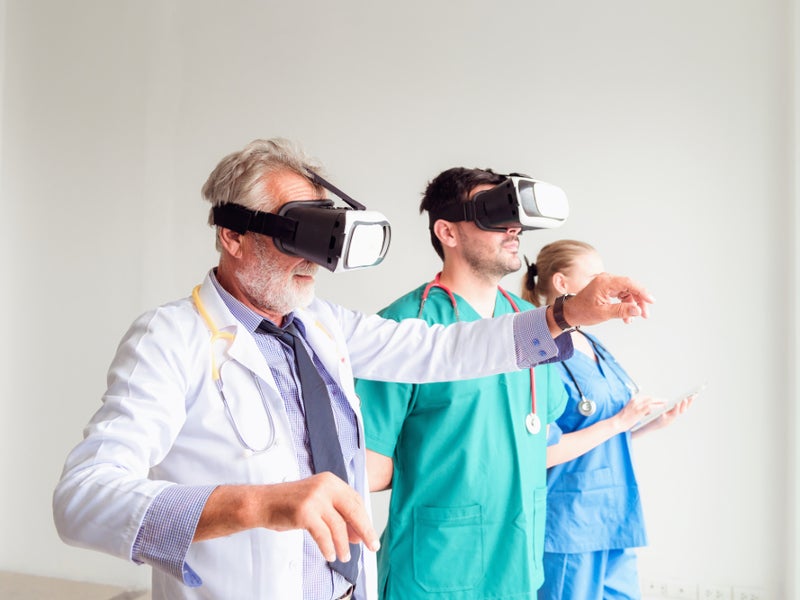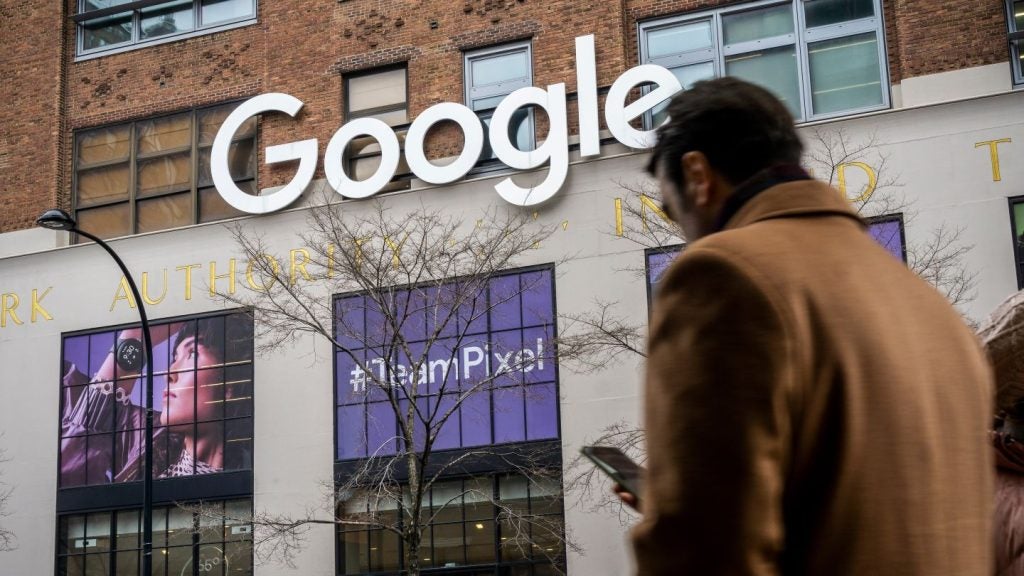In healthcare, wearable technologies are defined as non-invasive and autonomous devices that capture, analyse, and aggregate physiological data to improve personal health and well-being. Wearable technology has been used almost exclusively for fitness purposes to date, steered by the increasing demand of consumers to monitor their own health.
Listed below are the key macroeconomic themes impacting the wearable tech industry, as identified by GlobalData.
Demographics
The popularity of wearables with health applications is steadily on the rise in Western countries: ownership of wearables touched an average of 30% in the US, Spain, and Turkey in 2018. The Europe, the Middle East, Asia Pacific, and Latin America markets are dominated by male customers. In the US, the largest market for wearables, female adopters prefer productivity enhancement devices such as fitness trackers, whereas male adopters are more inclined to try smartwatches and smart glasses.
In terms of age group, Millennials and Generation Z compose the key adopters for wearables, while Generation X and Baby Boomers are demonstrating growing interest. Wearable brands are carefully assessing the demographics in developing their products. While start-ups like Sensoria, Athos, and OMSignal among others are specialising in the niche products being demanded by Millennials and Generation X customers, established firms—Huawei, Samsung, Garmin, and Fitbit—are attempting to strengthen their positions in multiple growth areas covering all age groups.
Wearables benefit enterprise
Wearable technology is helping to accelerate digital transformation for enterprise. Powered by a unique mix of robotics, alternative reality, IoT, sensors, and AI-supported virtual assistants, wearables offer enterprises significant solutions to process complex data sets in real-time, thus driving augmented physical and perceptual capabilities of workers and enhanced safety measures. These devices primarily enable enterprises to streamline their processes, improve employee skills, reduce operation costs, and save substantial time—all of which directly support business growth.
Wearables are expanding into a wide spectrum of enterprise applications propelling the inception of wearables-as-a-service (WaaS). As industrial and business use cases for internet-connected devices increases, companies have begun to implement wearables in the workplace.
Wearables and customer experience
Wearables hold substantial potential to transform contextual experiences into emotional, personalised experiences with great potential to keep patients and consumers engaged and invested in their personal health, mostly capitalising on BLE usage and engagement. Driven by the association of wearables and BLE, consumers/ patients will benefit in the form of remote monitoring, decreased travel to appointments, more personalised experience, continuous monitors of more metrics, and ability of continuous monitoring by healthcare professionals.
Wearables will eventually develop into mainstream instruments for all service-oriented industries such as banking, retail, entertainment, telecom, insurance, and healthcare.
Wearables and supply chains
As patients increasingly use wearable technology and mobile apps in health monitoring and management, how healthcare services are administered is changing. For the supply chain directly, this will reduce pressure on doctors, medical professionals, hospitals, and pharmacies while allowing insurers to gain a more accurate picture of health information from the insured. The digitisation of healthcare is already underway, with many patients and providers already utilised AI-powered healthcare services including home-based diagnostics, virtual health assistants (such as Babylon Health in the UK), as well as virtual nurse assistants.
In the future, a doctor’s role may evolve to providing more advanced care, where automated prescription services have the ability to modify prescriptions in real-time, accelerating the drug supply chain. Early adopters are set to position themselves better in the growing Industrial IoT ecosystem by leveraging wearable technologies.
US-China trade war
The ongoing trade dispute between the US and China threatens to impact the wearables market negatively. The imposition of a 10% tariff on wearables categorised under “data transmission machines” is likely to push prices of these products higher in the commercial markets. While American firms such as Apple and Fitbit are concerned about the impact of the additional tariff, Chinese smartwatch maker Huami (exclusive tech provider for Xiaomi) is optimistic of growth.
Huawei, the rapidly growing Chinese tech giant, is at the receiving end with no clear outlook of growth in the US market. Garmin’s limited dependency on the Chinese market insulates it from encountering the sting of the tariff surge.
Equalising tech maturity and adoption
Technological developments and prospective applications of wearables are advancing faster than the anticipated commercial adoption rates. Despite rising awareness, the evolving states of wearable technologies coupled with privacy concerns are inhibiting swift growth of wearable devices in mass markets. Prospective customers of wearable technologies—except early adopters—are still unclear on what value these devices will add in their regular lives apart from fitness and socialisation.
Additionally, hospitals and healthcare providers are unable to fully realise the potential of devices in clinical practice due to lack of proper training on the devices and the integration of data into existing IT systems. The role of wearable OEMs is becoming even more critical in ascertaining the value of wearable devices—beyond legacy tasks—to drive adoption. OEMs which hope to penetrate large, mainstream markets with smartwatches and glasses will have to create those markets.
Differentiation is necessary yet invisible
With increasing competition, wearable OEMs are striving to differentiate their offerings from their peers. For companies entering the wearables market, differentiating their product from those already available is not only technologically difficult, but also expensive. While some early entrants excelled in differentiating their products in terms of aesthetics, followers are merely embracing the imitation model. For example, Apple Watch’s rectangular and curve-edged look has become a standard design for several smartwatch OEMs.
Apple’s AirPods and Fitbit bands are also seeing imitation in the market, especially from smaller players. Smart glasses are the only segment maintaining some level of aesthetic differentiation, mostly because the technology is still in experimental stages. Meanwhile, price continues to differentiate, with wearable vendors setting prices of their products close to their competitors, leaving no space for new price slabs. While companies such as Xiaomi and Fitbit have attempted reducing prices to gain market share, Apple and Samsung have taken the premium pricing approach to position their products as luxury gadgets.
Wearables and customer loyalty
“Customer Loyalty” lies at the heart of the success of wearables. As the wearables market continues to gain momentum, retention of customers and development of a sustainable growth model are key parameters for wearables brands. Customer loyalty programmes pivot around offering incentives to customers, which enhances the product appeal and entices repeat purchase. The Fitbit Reward Program, launched in March 2019, incentivises customers with points to avail discounts at its partner brands, namely adidas, Blue Apron, and Deezer. Apple, on the other hand, offers discounts for exchange purchases of Apple products.
This trend is set to grow as competition increases and adoption improves. Incentives to understand health for consumers and patients remain under-developed and limited to insurance policies, corporate schemes, and distinct geographies such as Scandinavia where incentive structures for physicians to use digital health technologies and learn about them are in place. This, in turn, encourages patients to use them, as they are seen as “partners,” where questions around the technology flow bilaterally, growing the customer base in health from multiple areas.
Child care – a key driver for smartwatches
Smartwatches not only promise benefits to healthcare, but also childcare. The parental outlook of introducing children to technology by body-worn gadgets is fuelling growth in the wearables market. Bundled with entertainment, learning development exercises, and location tracking solutions, among others, smart wearables are progressively gaining traction worldwide. Features such as 4G and upcoming 5G connectivity, Wi-Fi, GPS, Bluetooth 4.0, voice call, step counting, parent-child navigation, SOS button, home and power button, voice assistant, shake & add friends, and rejecting unknown numbers, among others, are becoming common features in kids’ smartwatches.
Fitbit, Xiaomi, Huawei, Garmin, Tencent, and LG, among others, are banking on this population to gain early penetration advantages in the market. The Chinese wearables market is primarily capitalising on the child population. In Q4 2018, of all wearable devices sold in China, approximately 30% were targeted at children, of which around 40% were noted to be 4G enabled.
This is an edited extract from the Wearable Technology in Healthcare – Thematic Research report produced by GlobalData Thematic Research.









